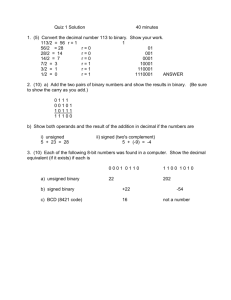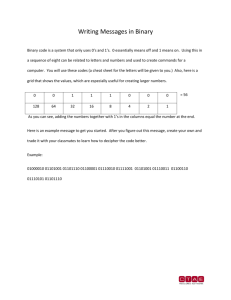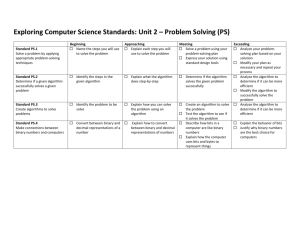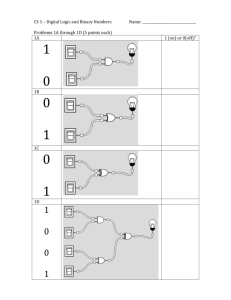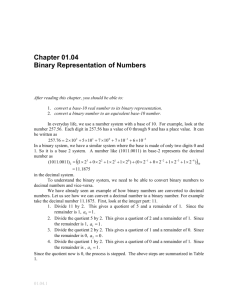4 – Binary Point Numbers
advertisement
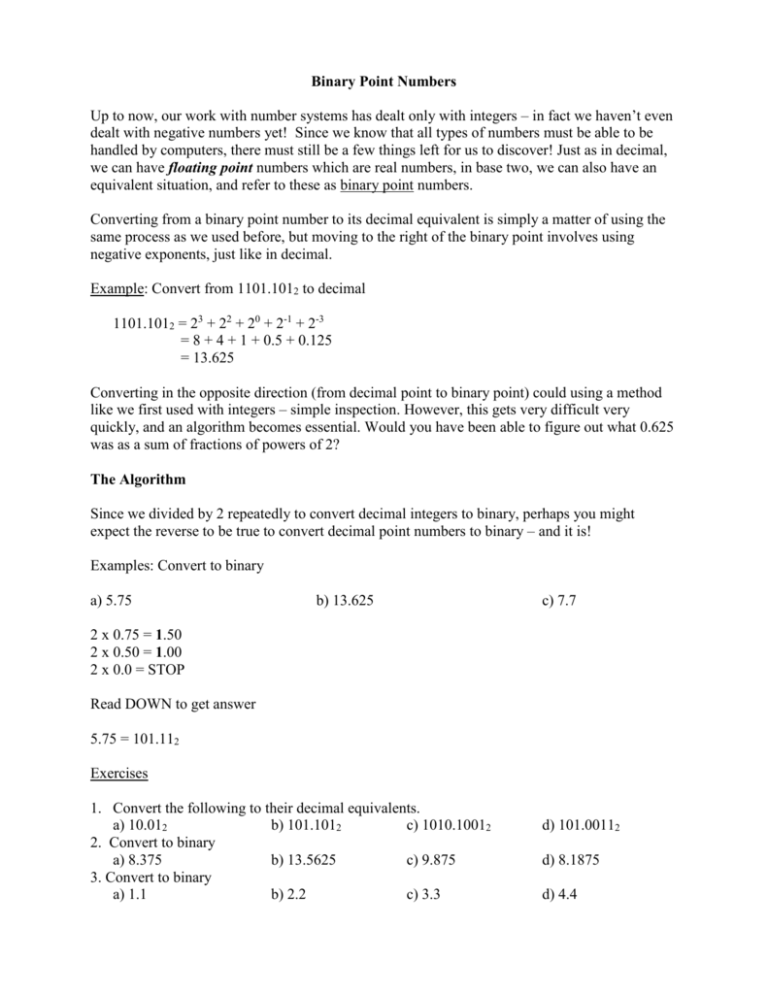
Binary Point Numbers Up to now, our work with number systems has dealt only with integers – in fact we haven’t even dealt with negative numbers yet! Since we know that all types of numbers must be able to be handled by computers, there must still be a few things left for us to discover! Just as in decimal, we can have floating point numbers which are real numbers, in base two, we can also have an equivalent situation, and refer to these as binary point numbers. Converting from a binary point number to its decimal equivalent is simply a matter of using the same process as we used before, but moving to the right of the binary point involves using negative exponents, just like in decimal. Example: Convert from 1101.1012 to decimal 1101.1012 = 23 + 22 + 20 + 2-1 + 2-3 = 8 + 4 + 1 + 0.5 + 0.125 = 13.625 Converting in the opposite direction (from decimal point to binary point) could using a method like we first used with integers – simple inspection. However, this gets very difficult very quickly, and an algorithm becomes essential. Would you have been able to figure out what 0.625 was as a sum of fractions of powers of 2? The Algorithm Since we divided by 2 repeatedly to convert decimal integers to binary, perhaps you might expect the reverse to be true to convert decimal point numbers to binary – and it is! Examples: Convert to binary a) 5.75 b) 13.625 c) 7.7 2 x 0.75 = 1.50 2 x 0.50 = 1.00 2 x 0.0 = STOP Read DOWN to get answer 5.75 = 101.112 Exercises 1. Convert the following to their decimal equivalents. a) 10.012 b) 101.1012 c) 1010.10012 2. Convert to binary a) 8.375 b) 13.5625 c) 9.875 3. Convert to binary a) 1.1 b) 2.2 c) 3.3 d) 101.00112 d) 8.1875 d) 4.4
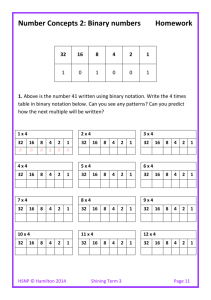
![Convert Decimal to Floating point number [IEEE 754]](http://s3.studylib.net/store/data/007978827_1-95bb3284f557c7d4e0d651bafdd27202-300x300.png)
